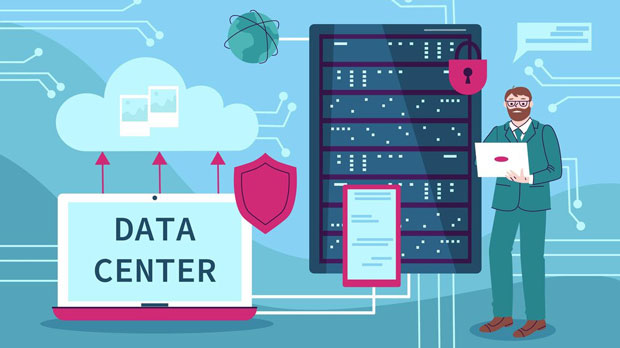In the realm of internet browsing, data scraping, or handling multiple user sessions, IP rotation is a crucial aspect to maintain anonymity, security, and functionality. Proxy servers play a significant role in achieving these goals. Among the numerous proxy providers, PYPROXY and PrivateProxy stand out as two popular choices for IP switching. Both services promise to enhance privacy, bypass restrictions, and provide faster browsing speeds. This article explores the IP switching efficiency of Pyproxy and PrivateProxy under dynamic proxy mode, aiming to offer a comprehensive analysis that helps users choose the best solution for their needs. Introduction to Dynamic Proxy ModeDynamic proxy mode refers to a system where proxies are assigned or rotated dynamically, often in real-time, based on specific needs or criteria. This mode is especially useful in situations where maintaining consistent IP addresses is neither practical nor desirable. For tasks like web scraping, social media management, or accessing geo-restricted content, dynamic proxies enable users to cycle through a pool of IP addresses, reducing the chances of getting blocked or flagged.The effectiveness of dynamic proxy solutions can be measured by factors like IP switching speed, success rate, reliability, and overall performance. Pyproxy and PrivateProxy are two such solutions that are widely used in the industry, but which one offers superior performance? Let’s dive deeper into their capabilities and evaluate their IP switching efficiency.What is Pyproxy?Pyproxy is a proxy solution that integrates seamlessly with Python scripts to offer a dynamic, automated, and efficient way of rotating IPs. It’s designed for developers, data scientists, and businesses that need to handle large-scale requests or continuous data gathering. Pyproxy utilizes a wide pool of residential proxies, providing users with access to numerous IP addresses across different geographical locations. This proxy service is known for its high performance, ease of integration, and robust functionality when it comes to handling dynamic IP rotation. The service is built to be flexible and supports various types of proxies, including HTTP, HTTPS, and SOCKS proxies, ensuring that it can adapt to different use cases. Pyproxy is also favored for its ability to integrate with other Python libraries, making it highly customizable and versatile.What is PrivateProxy?PrivateProxy, on the other hand, is a high-quality private proxy provider that offers dedicated IP addresses. Unlike residential proxies, PrivateProxy’s network is built on private servers that provide better security and faster speeds. This service is ideal for users who require stable, long-lasting connections and cannot afford interruptions in their activities.PrivateProxy offers both static and dynamic proxy modes, and it is widely used by marketers, security analysts, and content managers who need anonymity and reliability in their daily internet tasks. One of the biggest advantages of PrivateProxy is its premium network of proxies, which offers fewer chances of detection or being blacklisted compared to free or shared proxies.IP Switching Efficiency in Dynamic Proxy ModeNow that we understand the basic nature of Pyproxy and PrivateProxy, let's compare how well each service handles IP switching in dynamic proxy mode. The following factors will be considered in this comparison:1. Switching Speed: The speed of IP switching is crucial for users who require fast responses, especially in automated tasks. Pyproxy typically offers rapid IP switching by drawing from its large pool of residential proxies. The transition between IPs is quick, with minimal latency, ensuring that tasks are completed without significant delays. PrivateProxy, while known for reliable and consistent connections, might not switch IPs as quickly as Pyproxy. The dedicated nature of its servers means that there may be some delay in switching, especially when handling multiple tasks simultaneously. However, the reliability of the IP addresses in PrivateProxy often compensates for this minor delay.2. Success Rate and Reliability: In dynamic proxy mode, the success rate of IP switching refers to the ability of the proxy to avoid detection, blockages, or rate-limiting by websites. Both Pyproxy and PrivateProxy offer high success rates, but the context in which they are used differs. Pyproxy shines when it comes to scraping data from websites or accessing resources that require consistent IP address rotation. The residential nature of its proxies provides a high level of anonymity, reducing the chances of being detected or blocked. However, the performance can vary depending on the quality of the IP pool at a given time. PrivateProxy excels in reliability and uptime, especially when it comes to accessing websites that require stable, dedicated connections. The private nature of its proxies ensures a higher level of security and fewer interruptions during tasks, making it ideal for business applications and secure browsing. However, users might experience slower IP switching speeds compared to Pyproxy due to the nature of the service.3. Ease of Use and Setup: Both Pyproxy and PrivateProxy are relatively easy to set up, but Pyproxy has the edge when it comes to integration with Python scripts. As it is primarily designed for developers, Pyproxy allows for easier automation and more granular control over the IP switching process. Developers can create customized scripts to manage their proxy usage efficiently, which is a huge advantage for users who need flexibility. PrivateProxy, while offering a user-friendly interface, may require more manual configuration for tasks involving dynamic IP rotation. However, its straightforward setup and dedicated customer support ensure that users can quickly get up and running.4. Pricing: Pricing is often a key consideration when choosing between proxy providers. Pyproxy offers flexible pricing models depending on the scale of usage, with options for both small and large users. Its pricing is competitive for residential proxies, but heavy usage can lead to increased costs. PrivateProxy, while typically more expensive due to the private nature of its proxies, offers better value for users who prioritize security and reliability. Its pricing is generally suitable for business applications or long-term use.ConclusionIn conclusion, both Pyproxy and PrivateProxy have their strengths and weaknesses when it comes to IP switching efficiency under dynamic proxy mode. Pyproxy is ideal for users who need fast, automated IP switching with minimal delays and high anonymity, making it perfect for data scraping, web automation, and other high-volume tasks. Its integration with Python scripts makes it highly customizable for developers.On the other hand, PrivateProxy offers more reliable, stable connections, making it a better choice for business applications that require consistent performance and higher levels of security. While its IP switching speed may not be as rapid as Pyproxy, its premium proxies ensure that users experience fewer interruptions and better privacy protection.Ultimately, the choice between Pyproxy and PrivateProxy depends on the specific needs of the user. For those who prioritize speed and flexibility, Pyproxy is the better choice. However, for users who value security, reliability, and longer-lasting connections, PrivateProxy is a superior option.Both services excel in different areas, and understanding these differences can help users make an informed decision when selecting the right proxy solution for their needs.
Oct 13, 2025



































































